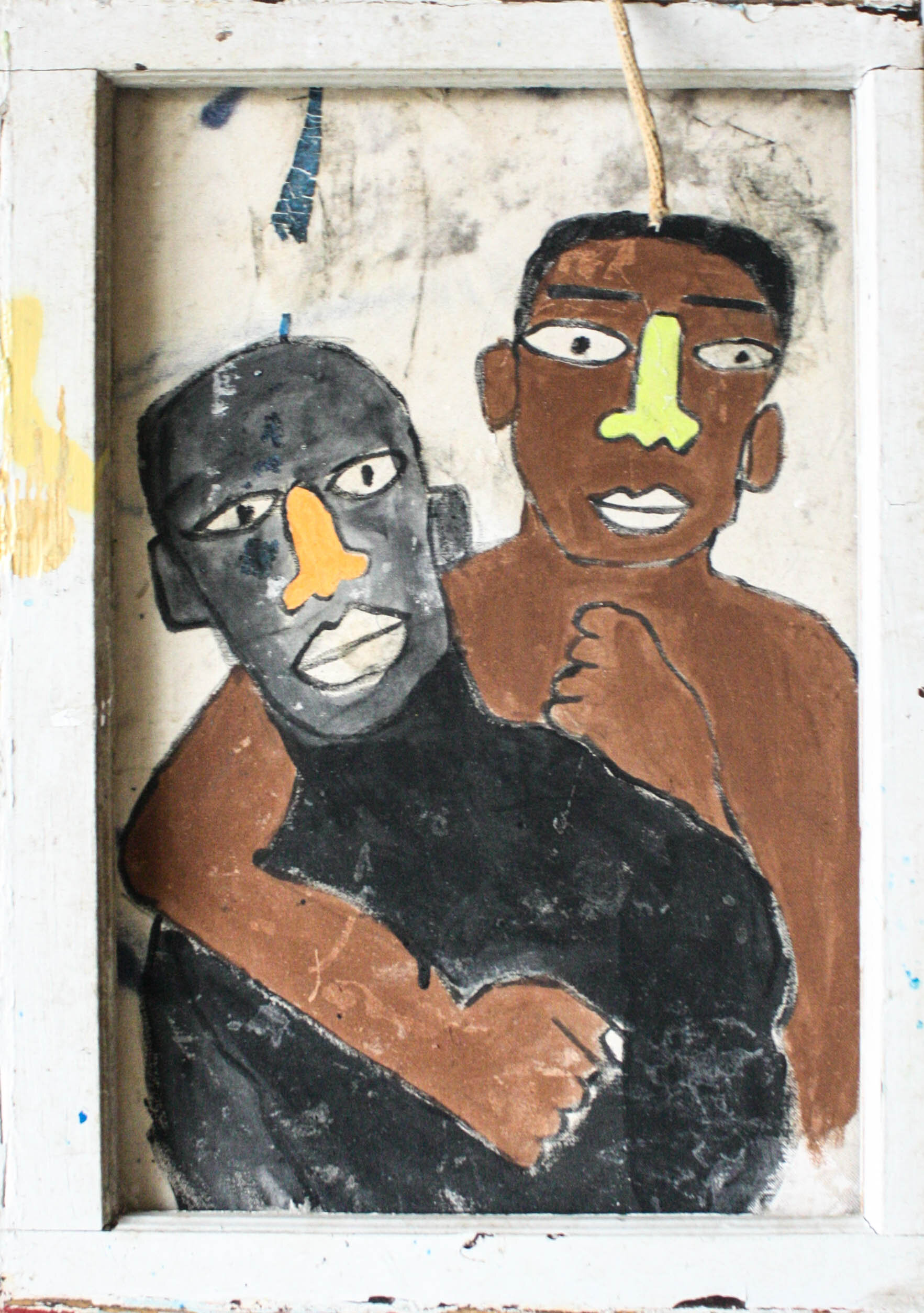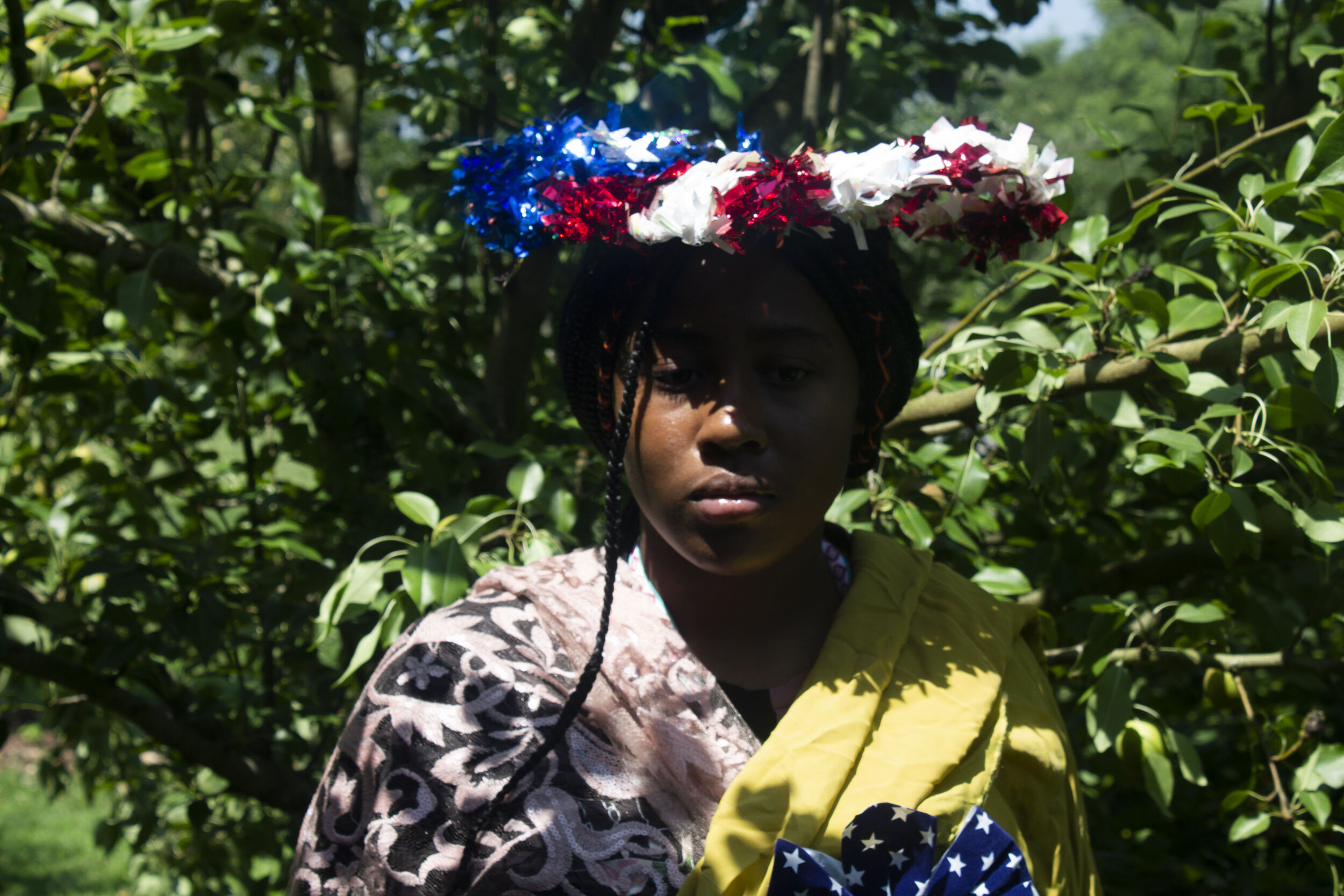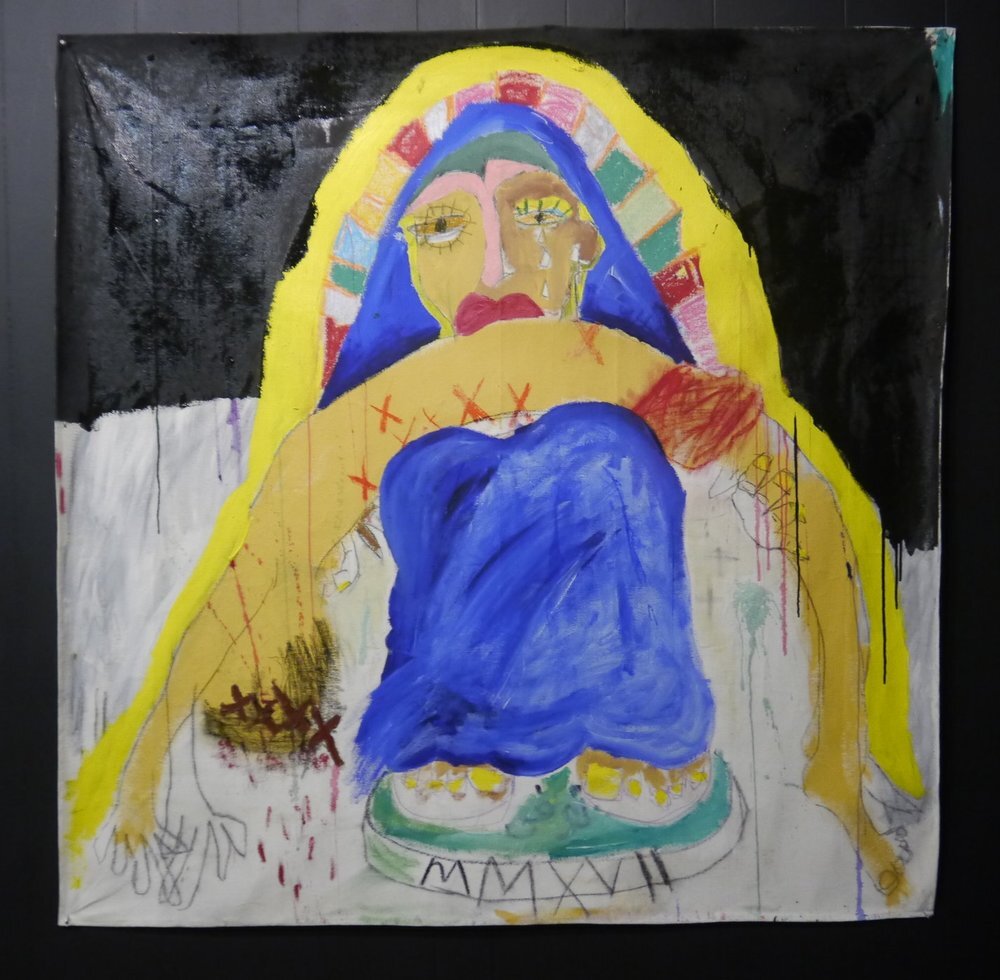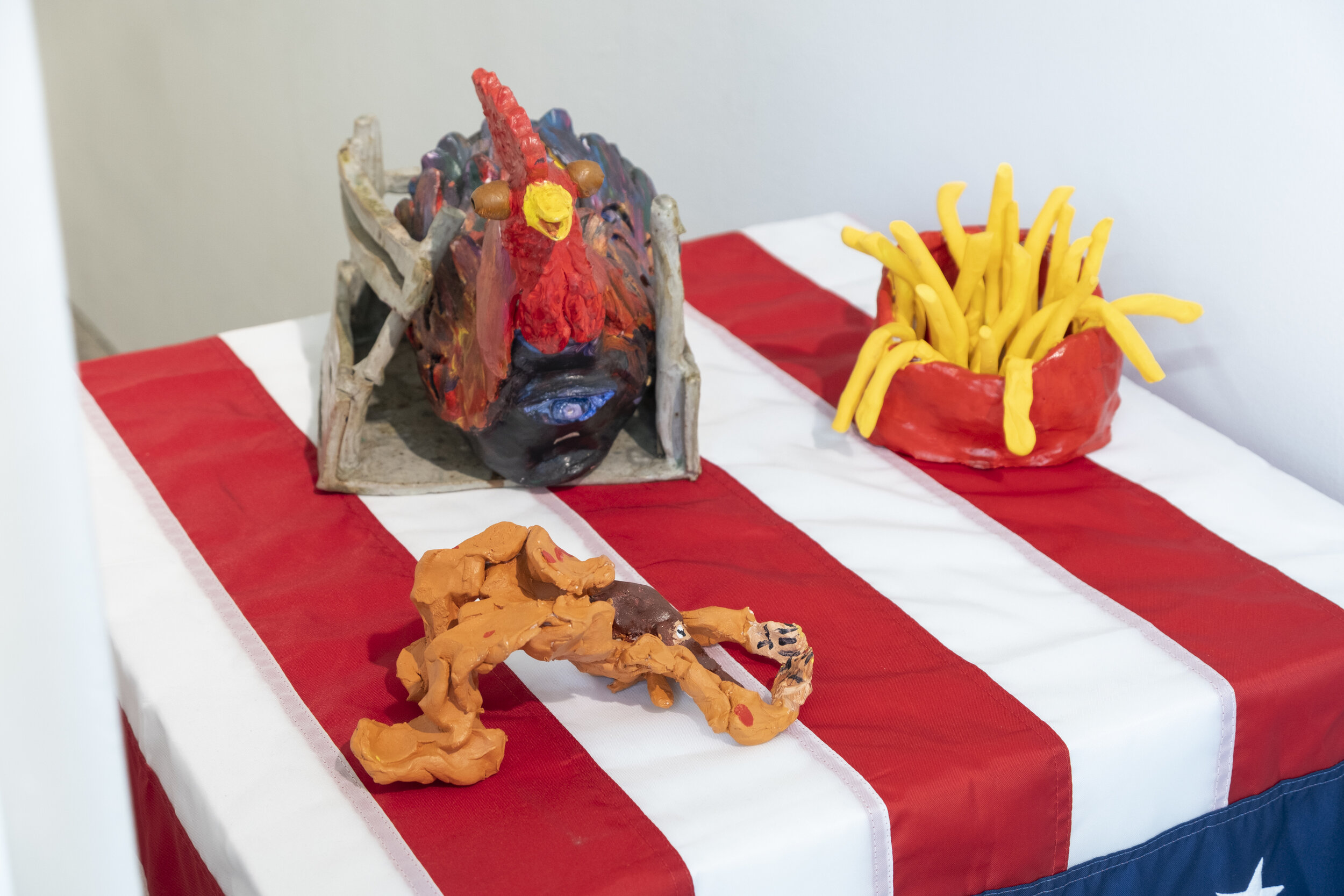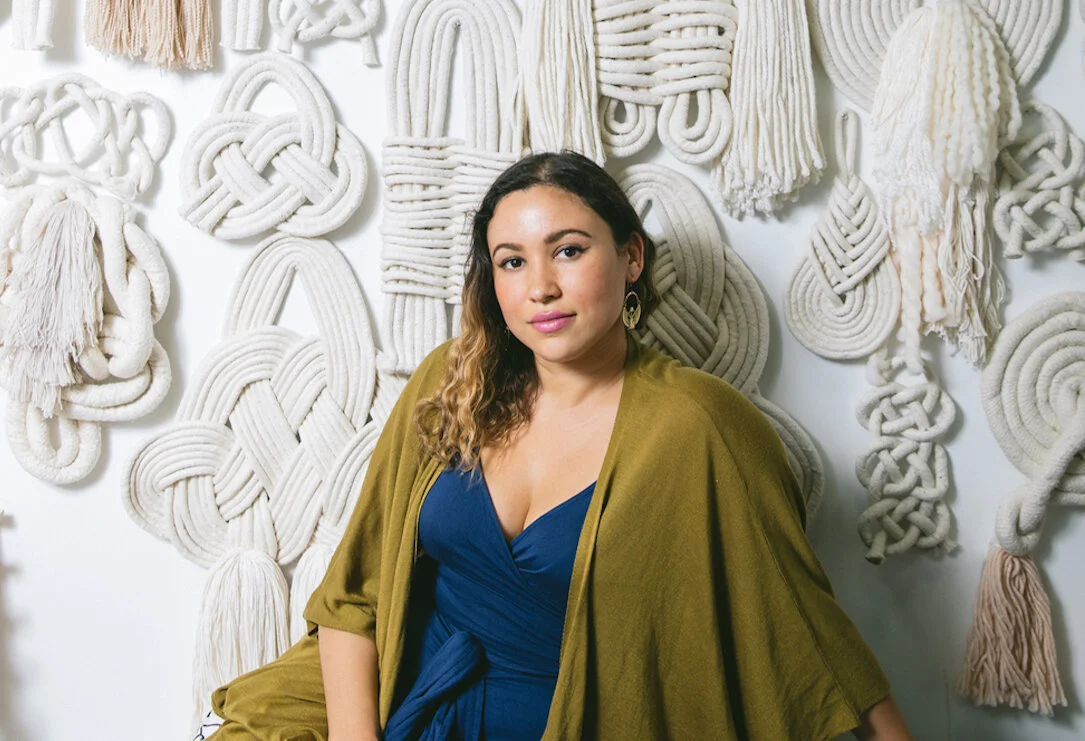Marlos E'van
The Painter on Voice and Purpose
From his 2016 debut show, Dyin’ By Tha Gun! to today, the multidisciplinary artist Marlos E’van has developed and deepened a voice that engages, challenges and invites viewers into dialogue.
Whether it’s a studio painting, work on found objects, film, sculpture or any combination of media, E’van’s work digs into incendiary topics, pop culture, race and identity. He asks us to interrogate our preconceptions, to let go of our inner editors and to live in the moment with the work.
“I want you to look at it and be immersed in it. What can we do to make me never have to paint something like this again?”
—Marlos E’van
The Path to Voice
Before a family connection pointed him to Watkins College of Art in Nashville, Tenn., Marlos E’van was a kid growing up in Mississippi, making art without a thought to a career in it. “My whole life I've been doing art,” he says. “I was just making stuff… it was fulfilling a need. That's exactly what it was doing. Whether that was releasing creativity, or practicing ideas, practicing methods, practicing materials.”
In his senior year at Watkins, E’van produced a full solo show, Dyin’ By Tha Gun! Its 2016 premiere in North Nashville was acclaimed, and it established E’van’s name in the art community, propelling him to other gallery shows, film and book projects, and more.
GALLERY
The Why Behind the What
Since then, his work has appeared in a multitude of galleries, shows like Greetings from Nashville at James Madison University, and publications including Native Magazine and an appearance in Hyperallergic when his publishers were harassed by TSA at LaGuardia for carrying copies of E’van’s gorgeous, shocking book Skull Microwave.
This latter detail is fitting for E’van’s work and personality. He’s smooth, quick to laugh and thoughtful, and his work is the same. He loves both to ironically and unironically reference pop culture and fast food. Whether he’s exploring gentrification in a film like Northern Gardens, attacking crime against people of color or subverting racist stereotypes, his work is simultaneously blunt and subtle. It’s textured and emphatic.
Exploring the why within his work he says, “There's different branches to that tree. One branch is to provide a voice and to provide a platform for us as a people around the world to better ourselves. To go further into that, I feel like I'm making the work that I make not just as shock and awe… I want you to look at it and be immersed in it. What can we do to like, make me never have to paint something like this again.”
“I was really inspired by the Rodney King incident that was a moment in our history where it was the first beating caught on tape of that magnitude. And now you start incorporating video cameras and body cams — I thought they were presented as ‘this is supposed to prevent these types of things from happening again.’ But now it's like years and years and years. Everything's been documented. But why isn't it slowing down?”
Pieces like Black Myth #2/Wanted and CNN Saw it all are damning gut punches of violence against people of color, and America’s fetishization of it in the news and social media.
The Last Suppa
E’van’s work is also inclusive, which is easily overlooked in today’s climate of everybody vs everybody else. His painting The Last Suppa is a beautiful peek into his mind. “Growing up, my grandma always had a painting of the Last Supper above the kitchen table … it was always looming over the top of the table. I used to think when I was looking at it, ‘wow, if I could make the perfect painting, it would be a more inclusive version.’ My grandma’s version — it’s all white. I wanted to flip that up. I made it to where there was different genders, different religions, different races on there. It almost serves as an ode to my grandma.”
“Tha Last Suppa for me also serves as saying we shouldn’t all look the same if we’re sitting at a table as a community … we’re neighbors, we can all sit at the same table. But we have to want to, you know what I mean?”
Want to learn more? Join the Outer Voice Not-So-Secret Society for an extended article from this interview, plus other great benefits.
Links! | website | instagram | twitter | red arrow gallery | burnaway interview


